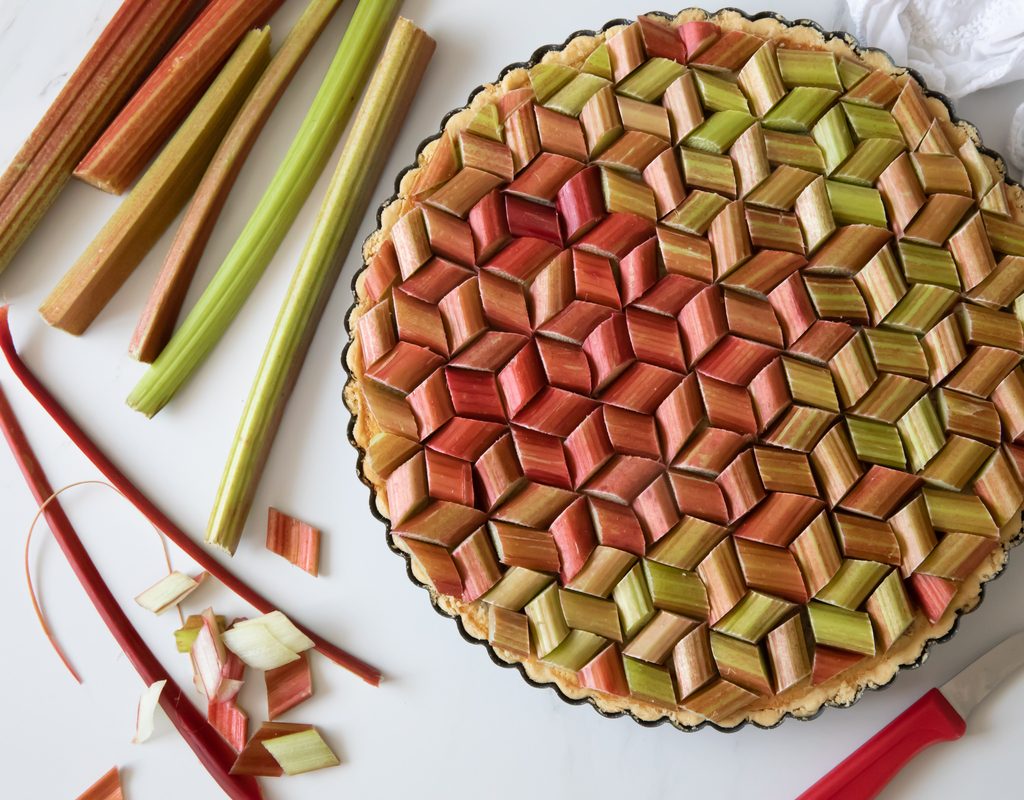There are many delightful fruits and vegetables to grow in your garden, but how do you know which is which? There are some plants, like tomatoes, that blur the line between the two categories. What other plants might be the same? Take rhubarb for example, a tangy and delicious perennial that’s typically grown as part of a fall garden. It’s baked into pies, like a fruit, but it doesn’t look like a fruit. If you’re curious about what rhubarb is, then you’ve come to the right place. We have the answers you’re looking for here in this simple guide to rhubarb classification.
What are fruits?
Fruits are formed from the ovum of a flower, usually after it’s been pollinated, to carry the seeds of the plant. There are many types of fruit, including berries, aggregate fruit, and drupe, also called stone fruit. There are differences in the details of how these types of fruit are formed or how they’re structured, but they all follow the same general principle of forming from one (or sometimes multiple) flowers and carrying the seeds of the plant. Some plants will produce fruit without pollination, which is how many seedless fruit varieties are produced. Although fruit is divided into several different categories and can be different colors, flavors, and textures, it’s still just one part of the plant. This makes fruits easy to identify, as long as you know what you’re looking for.

What are vegetables?
Vegetables can be a little trickier to identify, since they aren’t always the same part of the plant. The word vegetable can apply to any plant or part of a plant, as long as it’s edible. Vegetables can be stems, leaves, flowers, seeds, roots, or even fruit. Although any edible plant part can be considered a vegetable, there are a few factors we as a society typically use to determine whether or not we’ll actually call it one.
In general, vegetables are eaten in savory meals or accompanying a protein. They can be sweet, but vegetables that are also fruit tend to be less sweet than other fruits. Take tomatoes for example. Tomatoes are fruit, but they’re less sweet than other, non-vegetable fruits (such as pears or peaches). They’re also eaten primarily in savory meals, both with and without protein.

What is rhubarb?
Rhubarb is not a fruit. It’s the stems of the plant Rheum rhabarbarum, or garden rhubarb. Although the plant does technically produce a type of fruit, it’s small and not particularly good for eating. The stalks are the only part of the rhubarb plant that we eat. In fact, the leaves contain oxalic acid, which is toxic in large amounts.
So, then, rhubarb must be a vegetable, right? Well, yes, technically speaking. It is an edible plant part. However, where rhubarb runs into some problems is with the more specific definition of vegetable. Rhubarb pies and rhubarb crisps are two of the most common ways rhubarb is eaten. It’s a crunchy, tangy stem, and, to many people, it tastes more like a fruit than a vegetable. There are some savory meals it’s incorporated into. It can be cut up and added to salads, and sometimes it’s used for glazes or sauces that are layered over chicken. However, it could be argued that cranberries and oranges are also vegetables, since they’re used in the same way.
Ultimately, rhubarb is a vegetable because we have nothing else to call it. It tastes like a fruit, but isn’t a fruit. It’s an edible plant, which makes it a vegetable, even though we use it like a fruit. There isn’t a better-fitting category for rhubarb, so it must be a vegetable.

Why does it matter?
For rhubarb, the distinction matters because its classification is different from the way we use it. We eat it like we would a fruit, but it’s grown and harvested much differently than fruits are. If you thought rhubarb was a fruit, you’d be in for a rude awakening when you tried to grow it yourself.
On the other hand, the fact that it’s a vegetable opens the door for a myriad of culinary experiments. Why not play around with rhubarb in some of your favorite savory recipes? You never know what tasty combinations you might find when you begin treating rhubarb more like a vegetable.
No matter what you call it, rhubarb is a delicious addition to any garden. Even if you aren’t fond of the taste, the red and pink stems are quite pretty. It may defy labels, but rhubarb can be a fun, fruity way to add some extra color to your meals. Why not give it a try for yourself and see what you think?


